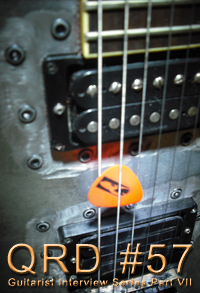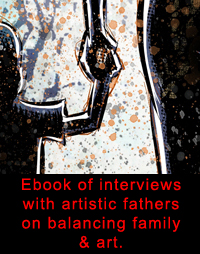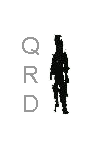
 |
| about
this issue
Guitarist Interviews with: Francesco Candura Justin O’Connor C Joynes Brandon W Pittman Killick Hinds Kyle Arthur Miller Mark Wol Dan West Olaf Rupp Lorne Hind Mark Nelsen Jordan Ferreira Willy B Andrè Erbyeah Shane Handal Interview Series Updates: Andras Fekete Martin Newman |
 |
 |
 |
 |
 |
 |
|
|
January 2013
Name: Andras Fekete
Bands: Boat Burning, Thee Dirtybeats, Triangle Rhysing
Websites: www.boatburning.com, www.theedirtybeats.com, www.trianglerhysing.com
ADDENDUM: In the summers of 2011 and 2012, Andras and Matt Guess of The White Cascade produced TRIANGLE RHYSING: MUSIC FOR MASSED GUITARS, a suite of movements for multiple groups of electric guitars (“guitar mobs”) plus cello and percussion. The performances brought together nearly three dozen musicians from around the Chapel Hill music scene, including members of members of AIRSTRIP, ALPHA COP, BELOVED BINGES, BICAMERAL MIND, BIRDS OF AVALON, BOAT BURNING, ERIE CHOIR, FAN MODINE, GENTLE ROBOT, GOODBYE TITAN, GROSS GHOST, HEADS ON STICKS, HEM OF HIS GARMENT, HORSEBACK, JOY IN RED, LAKE AND HENNEPIN, LE WEEKEND, LUD, MONSONIA, NEUROVINE, ONCE AND FUTURE KINGS, PROMUTE, REMORA, SAVAGE KNIGHTS, SHIPWRECKER, STRANGE LITTLE FOLK, STUDIO 713, THE BILLION, THE CURTAINS OF NIGHT, THE NEW ROMANS, THE OLD ONE-TWO, THE SPACEMEN, THE WHITE CASCADE, THE WINTER SESSION, THE WUSSES, VERONIQUE DIABOLIQUE, VIOLET VECTOR AND THE LOVELY LOVELIES, WHERE THE BUFFALO ROAMED, WOOL, and WRECKLESS ERIC.
Working with a large diverse group of musicians provided some unique insights on composing for massed guitar ensembles:
ON SCORING: One of the goals of TRIANGLE RHYSING: MUSIC FOR MASSED GUITARS was to attract active musicians from the local scene who were passionate about exploring new musical ideas. We noticed that many of the most passionate players out there have no formal music training at all, so we scored the movements so that sight reading would not be required. The system we came up with was less a formal score than a general one-sheet printed strategy for each piece, consisting of a unique tuning, ensemble orientation, and key of hand signals indicating chord and/or rhythm pattern changes. During a performance, each guitar mob watched the conductor’s hands for its next assigned pattern, and transitioned to the new pattern on the next four-bar boundary. In contrast, signals from the conductor requesting a change in dynamics were executed immediately.
ON THE ROLE OF CHANCE: A natural side effect of this loose approach to scoring is that each piece embraces chance while retaining a semblance of compositional integrity. The conductor, whose real-time decisions determine the overall shape of the piece by specifying what pattern each mob will play next, is a natural source of unpredictability, as is the relative ability of each player. While both guarantee no two performances will be alike, the fact that a single mind guides the overall process results in performances that are far more cohesive than if each mob simply played at random.
ON SONIC VARIETY: In pop music there is an assumption that in order to entertain music must be in constant change (e.g. verse/chorus/bridge, loud vs soft, fast vs slow, percussive vs melodic, dissonance vs harmony). In contrast, much of the joy of a massed guitar ensemble is the thrall of its sheer physicality and power – which must be experienced live to be believed – as well as the subtle interplay of overtones produced by so many instruments attempting to play the same thing at once. We found that a balance had to be struck between the urge to change merely to satisfy the expectations of pop song conventions and exploiting the unique strengths of the ensemble: To maximize harmonic overloading, chord changes were more often than not accomplished by moving a capo to different positions on the guitar neck, rather than by fingering actual chords. To maximize the intense thralling effect of the live performance, the ensemble was often allowed to drone on in certain configurations of keys and rhythms for several measures, allowing the audience time to appreciate the stacked harmonic density and random “phantom instruments” (sonic hallucinations) that often resulted as by-products. At the same time, various percussive techniques, including playing random chimed harmonics up and down the neck, were introduced as a counterbalance the drone, to great effect. Matt’s “A Thousand Points Of Light” is perhaps the best realization of the ideal.
Other QRD interviews with Andras Fekete:
Guitarist interview with Andras Fekete of Boat Burning (May 2011)
